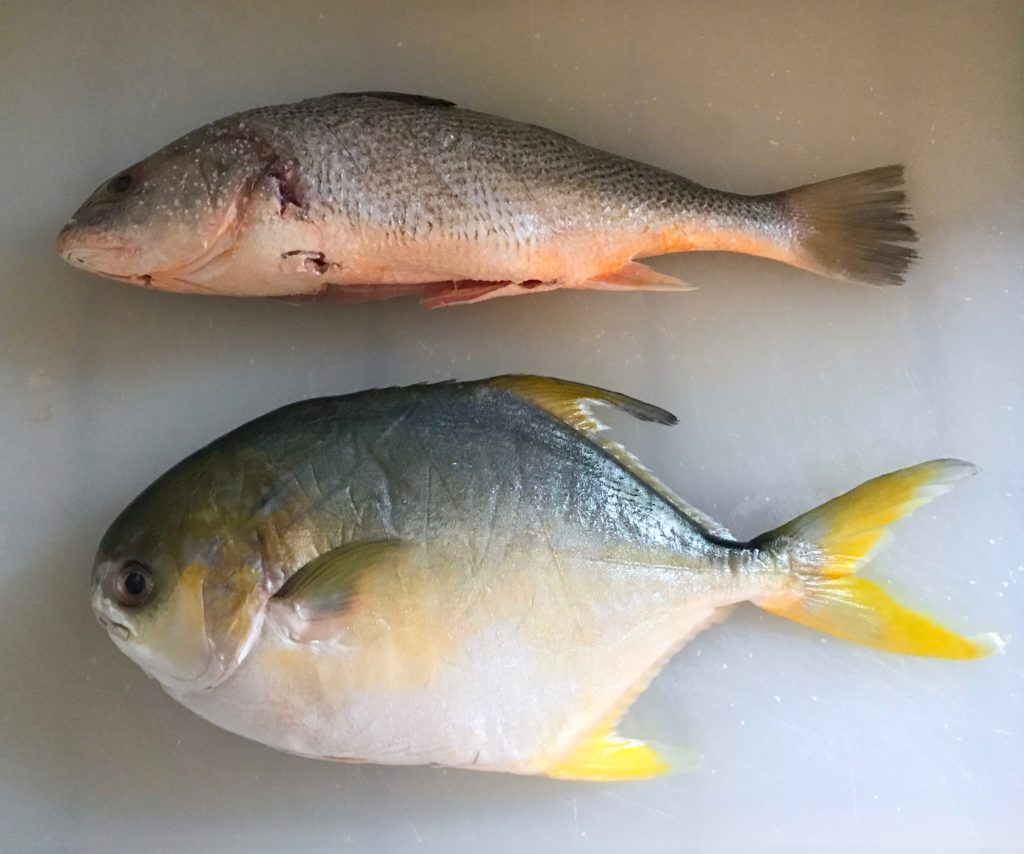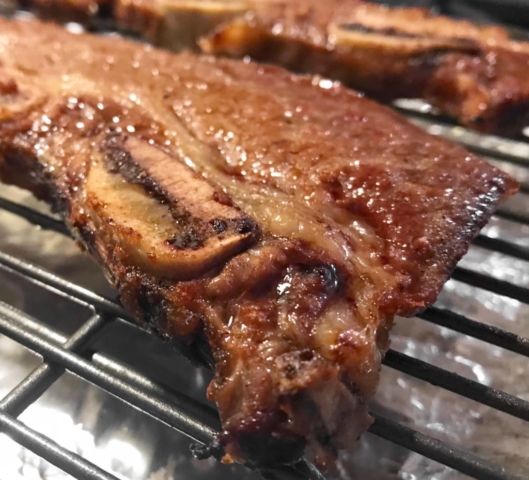
Cook Korean! A Comic Book with Recipes
Robin Ha
2016
Gift from my nephew-in-law, Robert Hopewell
Dishes cooked: Dolsot bibimbap, bean sprout salad, braised beef in soy sauce with eggs, ginseng chicken soup, pan-fried yellow croaker, soybean paste soup with clams, sweet potato noodles (japchae)
Dishes I want to cook: Black sesame porridge, army stew, seafood and green onion pancake, cool and spicy cucumber, chile chicken stew, spicy fish stew
Difficulty to make: Easy to medium
Difficulty to source: Medium
Seoul
Cook Korean! is self described as “a comic book with recipes,” but I think this is a brilliant cookbook that happens to have cartoons.
I started cooking Korean food about three years ago. I loved the Korean barbecue and soft tofu stews in Los Angeles’ Koreatown, but I’d hardly tried anything else, much less tried making it myself. I’d even lived four blocks from New York’s Koreatown for a year and a half and had only one drunken late night massage and spa encounter (in which I sat naked and alone in a communal bath full of floating citrus fruits) to show for it, until I returned to my old neighborhood on business trips and made a point of eating imported year-aged kimchi, Busan-style seafood, and as much sesame oil-drenched banchan as I could get.
If only I’d had this cookbook sooner.
Kalbi
Traditional Korean food encompasses the grilled meats and stews we all know, and, as this cookbook will show you in colorful hand-drawn detail, raw and cooked vegetable dishes, noodle and rice dishes, sweet and savory pancakes, seafood in many forms, and kimchi and pickles. There are even chapters on Korean fusion foods and Korean drinks and bar foods. It doesn’t have anywhere near everything—dumplings, entrail dishes, and traditional oxtail soup with its opaque pink-white broth are noticeably missing—but it has a lot.
Author and illustrator Robin Ha was born in South Korea, moved to the US as a teen, and attended the Rhode Island School of Design to pursue fashion. She studied abroad during her senior year, staying with an Italian family, and she loved the siestas with homemade three course lunches. She moved to New York after college, then to Brooklyn, where she missed her proximity to Manhattan’s Koreatown—I hear ya, sister—so she started to cook Korean food at home. Soon, the up-and-coming animator drew a traditionally dressed Korean character named Dengki to present Korean recipes on her blog, Banchan in 2 Pages. And then, I’m guessing, the book deal happened.
Bibimbap and soybean paste soup with clams
As you’ll discover in no time with Cook Korean!, cooking Korean food is easy, especially with sound effects written out in speech bubbles coming from blenders and pots, chili peppers and Spam cans with adorable faces and limbs, and funny comics of acorns saying “not only for the squirrels!” and jellyfish yelling “RUN!” It’s a lot of boiling, simmering, and grilling, and rarely for long, so you’ll have plenty of time to enjoy Ha’s how-to illustrations.
And you’ll learn something. There are many, many instances where Ha gives advice the quick way that I’ve learned the hard way, and I’m glad for her readers to be spared the frustration. For example, the instructions on imported packaged foods are often not great, like cooking times for noodles. She advises her readers to take to Google, reassuring, “don’t be afraid to fail on the first try!” She gives easy tips for telling if a food has finished cooking, like checking pork belly by seeing if a chopstick can pierce it. She quickly explains the importance of using Asian pear or kiwi in meat marinades for breaking down the natural enzymes that toughen meat in the cooking process. I’m embarrassed to say that I served a dinner party a stew with tiny rehydrated anchovies floating in it because I didn’t yet have her instructions to put them in a Korean strainer ball (or loose leaf tea infuser) for the cooking process. She also cites kitchen shears or scissors as an essential for preparing and eating Korean meats and noodles, and they are—at the same dinner party, I served japchae with its long, sticky noodles without cutting it up, and of course I ran out because it was impossible to take a small portion. I recently asked a server at a Korean restaurant how she would eat a Busan-style egg dish, and she made a scissor motion with her hands, which weren’t provided—so this cookbook will help you not just cook and appreciate Korean food, but eat it in your nearest Koreatown. Or Korea!
Three different times I’ve made sundubu jjigae, or soft tofu stew
She’s also wildly forgiving of, and sometimes even encouraging of, substitutions and experimentation to accommodate the western grocery store, though many essentials are available on Amazon Prime, which is one of the best parts of cooking Korean food. The bases for many Korean stews and soups are ingredients with long shelf lives in your pantry, refrigerator, or freezer, like soybean paste, dried anchovies and kelp (dashima), kimchi, gochugaru, soy sauce, fish sauce, and soju. Nearly any vegetable or protein will work in these stocks, and I hope—as I suspect she would, too—that you feel this cookbook is the perfect place to turn when you have odds and ends in your produce drawer and don’t know what to do with them.
But she never seems to adapt her recipes to the western palate, which I love. I think one surprise to a lot of people who are new to Korean cuisine is that for all of the chili paste and garlic and toasted sesame, many foods lack spice, pungency, and richness. My husband and I went to Seoul in 2016, and I fell in love with lightly dressed chewy rice cakes, raw fish over shredded daikon, and subtle black sesame sauces. Among the many dishes that won’t slap you around like a handball, none might be more bland, or beloved, than ginseng chicken soup, or samgyetang—typically served on the hottest day of the summer to counter heat with heat. But this is temperature heat, not spice heat. In a shop that specializes in samgyetang in Seoul, we were served ceramic dishes to fill with salt, pepper, and sesame oil to taste, to dip the chicken into. Its cavity had been stuffed with garlic, chestnuts, red dates or jujubes, and sweet rice before being boiled to the point where the meat separated from the bones and the skin melted in our mouths. You will never taste the essence of a chicken more than with this dish. It is healthy and easy and wonderful. So I hope you make it (page 70) and also forgive me for deciding my whole stuffed bird pictures from my homemade versions were too awkward to post.

A recipe called for yellow croaker, which I love and have purchased from the Korean grocery across the city, but my significantly closer Chinese grocery does not sell it, so I bought Atlantic croaker and golden pompano, like, half croaker, half yellow! I always recommend a dash of humor and also pragmatism in your cooking
Do be aware that ingredients are often called something generic when they could be more specific, like “dried seaweed,” “Korean red chili flakes,” and “rice vinegar.” Walk into a Korean market, and the seaweed options are as varied as on any seabed. You’ll typically need dried kelp, or what you may know by its Japanese name, kombu, and dried seasoned seaweed. Kombu keeps well in the freezer, so it’s worth getting the good stuff. Korean red chili flakes are very different from red chili flakes you’ll find in a typical grocery store spice aisle, and the quality varies greatly, too. What you want is called gochugaru, and you should look for the finest powder. Most grocery stores stock primarily seasoned rice vinegar, and what’s needed here is unseasoned rice vinegar, which is usually bottled with a green label. If you’re making the black sesame porridge, your black sesame is likely already toasted and you can skip the step of toasting it at home. A lot of recipes call for dried anchovies, and I’d be lying if I said I’d never used oil-packed anchovies when I started cooking Korean food and liked it, so that’s, well, probably going to get me some odd looks. But to that end, you’re not going to get the “why” of certain steps in the instructions, so stray from them at your own risk.
I think Cook Korean! makes a wonderful gift for anyone remotely curious about Korean food. It was given to me by my husband’s nephew as part of an epic Secret Santa exchange, and I sent my brother a copy for his last birthday. Though many essential ingredients can be purchased online (and I provide a shopping list below), I always recommend taking a half day trip to an Asian grocery store and going a little nuts. And there will be a pine nut porridge recipe waiting for you when you do.
Some of Los Angeles’ best and most photogenic Korean food
Ready to go shopping and eating? I can help!
Tae Kyung Non San brand gochugaru: I like this particular Korean dried red chile brand because it’s a fine powder as opposed to flakes, so when I blend it into stews it dissolves into the liquid, and attractively so—only thing is that it’s more perishable than you’d think and it’s always sold in a large quantity, so I always bag up some for family and friends
Emerald Cove brand kombu: An essential in both Korean and Japanese cooking, you don’t need much, and it stores well in the freezer
Kadoya brand sesame oil: It’s the only brand I buy, and given how much Korean and Chinese food I make, I really rely on the stuff—so helpful tips, store it in the fridge after opening, season at the end of the recipe, and start with less than you think you need, then taste, then add more if you want it
Chung-Jung-One brand gochujang: This red chile paste is why you love bibimbap, and while there are a bazillion brands, I do like this one, and it keeps forever
Jaeraesik brand doenjang: This is soybean paste, which you definitely want if you’re just getting started and nervous about strong, spicy, tart flavors
Double Pagoda brand mung bean noodles: These are your clear glass noodles (surprise! yes, they’re really made from bean flour) for japchae, and this is about a pound and a half—so it’s a lot
Laoganma spicy chili crisp, pack of three jars: Chinese, not Korean (!), but if you spoon this over kalbi or other Korean grilled meats, you’ll eventually eat it straight from the jar like me, and I’m not alone in that
And if you can get to an Asian grocery store, look for Hanasia radish kimchi, speaking of things you’ll eat straight from a jar (we go through it like most people go through milk)
For California residents, I recommend:
Ham Ji Park (no website): Its pork ribs and pork neck bone stew (gamjatang) will be one of the best meals of your life, I promise, in Los Angeles’ Koreatown
Workaholic: The best Korean dumplings in Los Angeles are at Smorgasburg on Sundays
Beverly Soon Tofu: Arguably the best sundubu jjigae, or soft tofu stew, in Los Angeles, but not the best in California because…
Omogari: Definitely has the best soft tofu stew I’ve ever had, in San Jose, and their bean sprout and potato banchan are also outstanding
Chungdam: Not far away, in Santa Clara, I love their spicy cold noodles, seafood pancake, and banchan






































